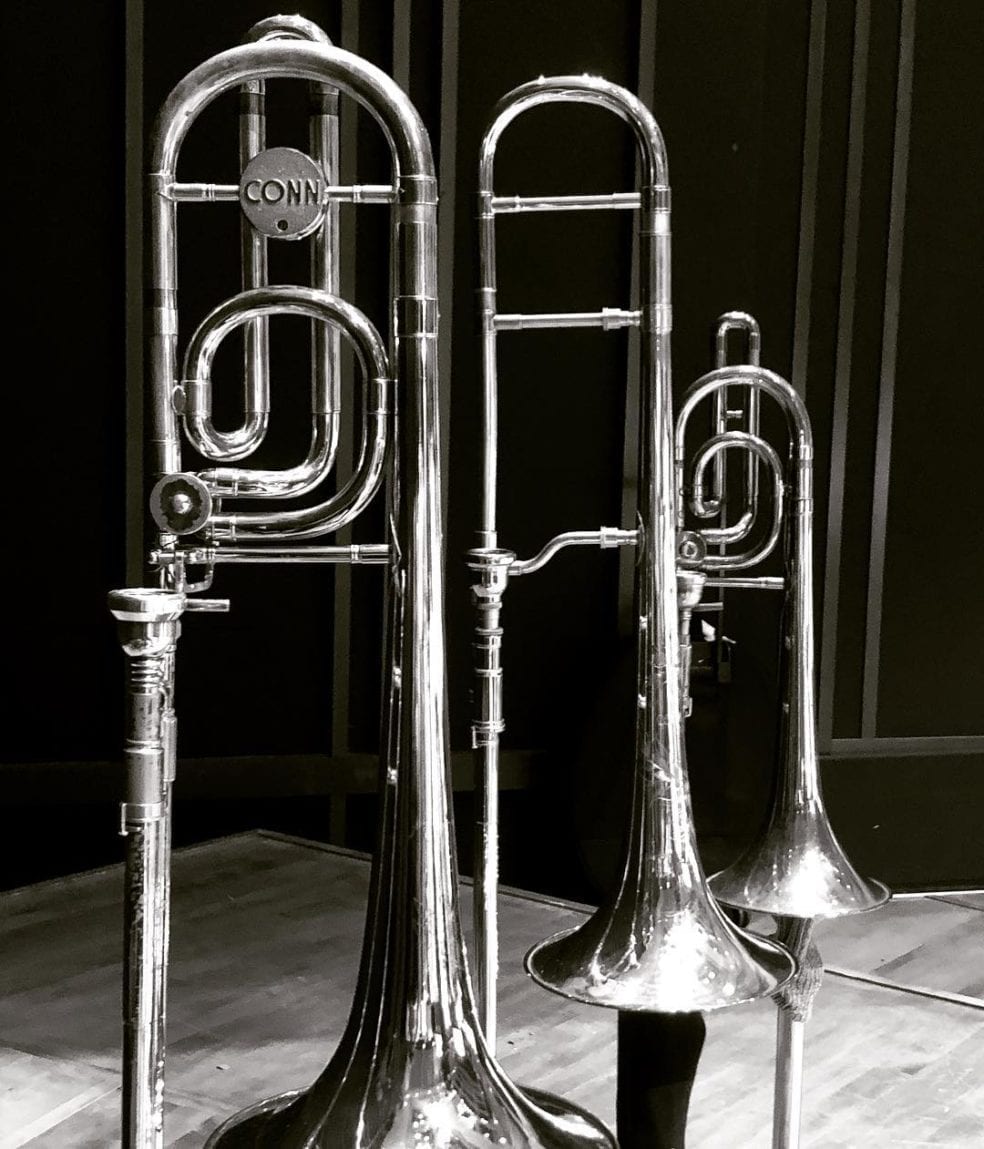When the Jacksonville Symphony plays music from the Classical and Early Romantic periods the trombone section often scales our instruments down to better blend with a smaller orchestra. As opposed to what we usually play – two large tenor trombones with valves and a large bass trombone with two valves – we use an alto trombone, a “straight,” or, valve-less trombone in the middle and a single valve bass trombone on the bottom. By using these smaller instruments we are better able to replicate the lighter and more blended sound composers such as Mendelssohn, Beethoven, Mozart and Brahms had in mind when they were writing for the orchestras of their time.
Perhaps the first question you might have asked is “trombones have valves?” And the answer to that is, quite simply, yes they do. While the trombone is operated by a handslide which we move and adjust to find our pitches – exactly like a violinist or cellist moves their fingers on their strings to find their pitches – modern trombones all have a valve that allow more accessibility across the instrument as well as allowing us to reach lower notes required by many late-Romantic, neo-Classical and modern composers.
For a modern bass trombone, we have two valves. This is mostly due to how much of our work falls in the lower range of the instrument in addition to giving us even more accessibility across the instrument. When we scale down, I move to a smaller bass trombone with a single valve for a lighter, more blended sound that works well with the cellos, French horns and bassoons.
So what’s a “straight” trombone, then? Well, it’s exactly what comes to mind when you think about what a trombone is. It’s a trombone with no valve attached to it as it doesn’t need to play lower notes like a bass trombone does. Trombones were often pitched differently depending on what voice type they played with in church with the alto trombone being pitched for high voices, the tenor for middle voices and a bass for low. Before Schubert and Beethoven began using trombones in symphonies, the trombone was an instrument used to accompany the voice and help provide a confident and reliable pitch for the singers in choirs and opera. As it was the only brass instrument that could play any note before the invention of valves thanks to the handslide and its uncanny similarity in sound to the human voice, composers utilized the instrument in this way for centuries.
The last trombone you’ll see on stage, the alto trombone, is the smallest trombone we use in the orchestra. It is a light, cottony sounding instrument best suited for higher pitches and helps to blend better with the French horns and trumpets, which helps unify the brass section.
Up until the late-Romantic period, aside from accompanying choirs, the trombone’s main role was to provide colors and nuances to instruments in the orchestra. Around the time of Bruckner, Wagner and Mahler, the trombone section began to be thought of as its own instrument group, along with a tuba, and was given a much different role. While still providing nuances and coloring, the low brass section now began to find itself in the spotlight with composers writing melodies and thematic motives in our parts.
Where else where you see these smaller-than-usual trombones this season?
- Amadeus – Film with Orchestra – January 18
- Don Giovanni – January 25 & 27
- 2019 Symphony Gala – March 2
- Mozart’s Jupiter – April 26, 27 & 28
- Brahms Symphony No. 1 – May 17, 18 & 19
Be sure to keep an eye AND an ear out for these smaller trombones in the back row at these performances. We can’t wait to see you there!
By Bass Trombonist, Christopher Bassett


